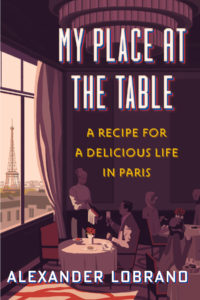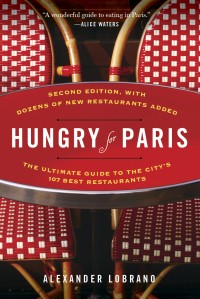Mensae, Paris | Belleville Goes Gastro, B+
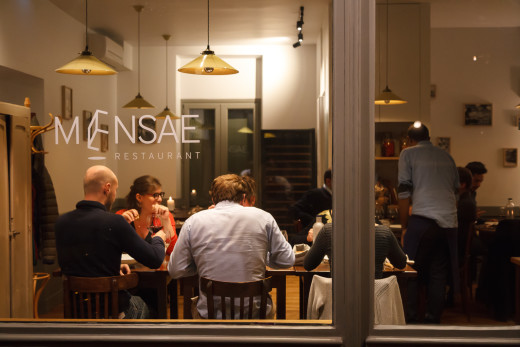
When I asked chef Kevin d’Andréa why he and business partner and fellow chef Thibault Sombardier had chosen the Belleville district of Paris as the location for their excellent new bistro Mensae, he said, “The neighborhood is really happening right now.” And for better or worse, it is. In fact this old working-class neighborhood in northeastern Paris where Edith Piaf and Maurice Chevalier were born is changing so quickly it’s inducing emotional and sociological vertigo in many longtime residents, like the delightful and sublimely talented chef Raquel Carena of Le Baratin, for example (for more on Mme. Carena’s feelings on the subject, see here).
City planners regularly ignore or underestimate the impact that restaurants can have on the health and evolution of an urban neighborhood. The first example that always comes to my mind is Danny Meyer‘s Union Square Cafe in New York City, since it both anticipated and accelerated the gentrification of a rundown, crime-ridden part of Manhattan when it opened in 1985. Ironically enough, Le Chapeau Melon and Le Baratin may have both had the same seminal impact on Belleville, too. To judge from the comments some people leave about the neighborhood on TripAdvisor, Belleville still elicits a sort of ‘Lions-and-tiger-and-bears, oh no!’ reaction from the world’s well-heeled suburbanites, and the first but rarely only time these people ever set foot in the area is to eat at these restaurants. The same thing is going on in New York City’s Harlem today, too.
Even with the soft French economy, the irrevocable mill of the real-estate speculation that leads to disruptive renovation continues to churn through what remains of those districts of Paris that once housed the city’s working classes, who are now gradually being expelled to the modern suburbs on the other side of the peripherique, the beltway that constitutes the rather constricting collar of the French capital. It’s the same everywhere, too: living in the city has become a privilege. And who can blame the young bobo couples who prefer good architecture, a strong sense of place and history, urban liveliness and diversity and great food to the murky blandness of most suburbs (I speak from experience, too, since I grew up in suburban Connecticut and told my mother as a nine-year-old that I hated living in a ‘melted city,’ which is how I perceived of our suburb, and would move to New York City, where my much envied cousins lived, as soon as I could; and I did).
Et donc à table, since the Latin word for table is mensa and the one that D’Andréa and Sombardier have created is very good indeed. Arriving, it presents an unexpectedly polished, almost television-studio perfect face to the world, with a service bar of recycled wood, ecru walls, suspension lamps, plank floors, a set of copper cookware on one wall and shelves filled with appetizing jars of preserved mushrooms, fruit and vegetables. So somehow it’s not surprising that the very experienced and media savvy D’Andréa and Sombardier were both finalists on the predictably noisy and not very convincingly gastronomic French television cooking show “Top Chef.”
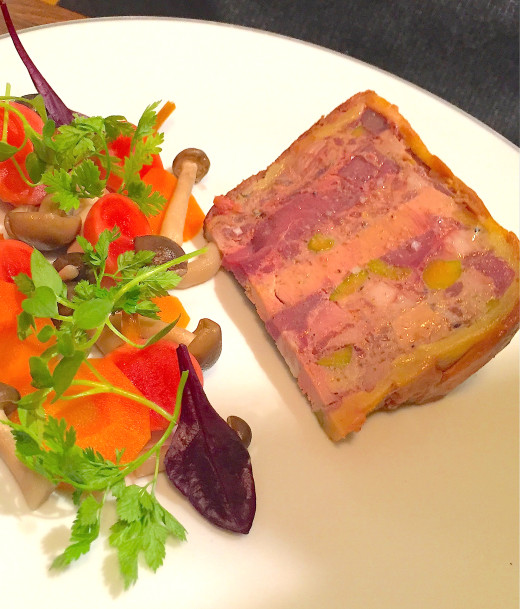
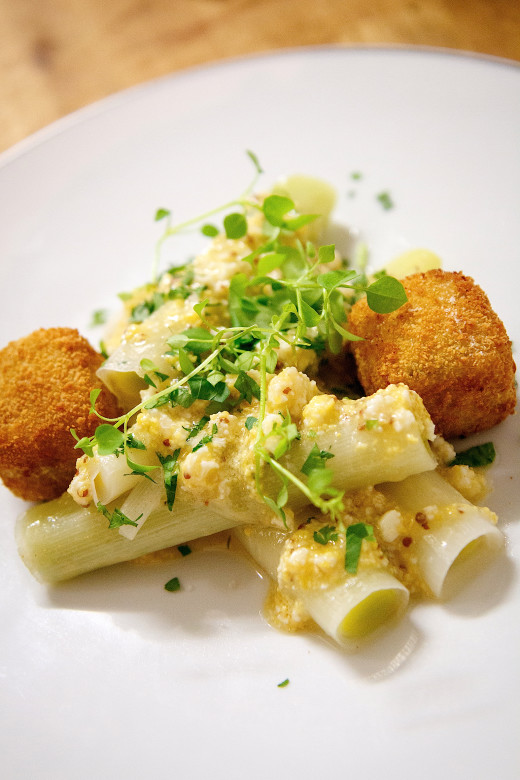
Happily, however, the meal we had the other night was just about as many light years from a TV dinner as you could possibly get. This kitchen is very serious about its sourcing, always a good sign, with vegetables coming from the Bretonne produce princess Annie Bertin and Joël Thiébault, Armara for fish, Hugenin and Les Boucheries Nivernaises for meat, and Lyon’s La Mère Richard for cheeses (insofar as this last supplier is concerned, I detect that quality has been slipping since the business was bought by a company in Normandy). The menu is intelligently constructed with an appealing assortment of plates to share–frogs’ legs sautéed in garlic and parsley, charcuterie from Sibilia in Lyon, and Basque style squid, then five starters, five main courses, and three desserts.
On a rainy night when I arrived at the restaurant a bit shaken after having passed an impromptu shrine of wilting flowers and votive candles in a nearby doorway–one of the victims of the recent terrorist attack on Paris lived the building–the dining room was warm and soothing when I stepped inside, and the waiter was suavely charming when he brought us menus and aperitifs of white wine. More on him later, but we were both hungry and our starters were excellent. Bruno’s pastry-enclosed terrine de gibier (game) was unctuously rich and autumnal, with a bright garnish of sweet-and-sour pickled vegetables, and my leeks with a mimosa garnish (sieved hard-cooked egg) were gently marinated and delightfully accompanied with crispy croquettes of de-boned calf’s feet.
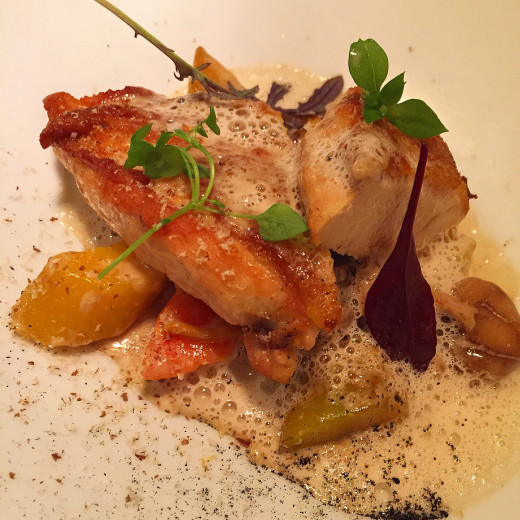
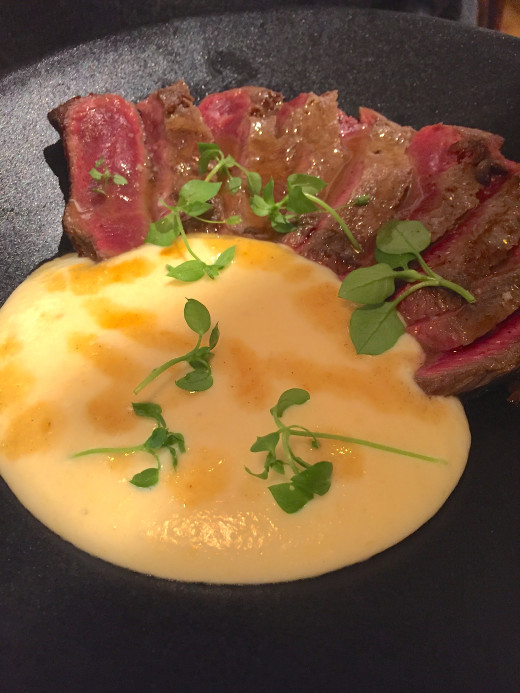
Our main courses were excellent, too. My chicken was pleasantly crisped but still succulent and came with an earthy mix of winter vegetables–parsnips, carrots, and chestnuts–in a creamy vin jaune seasoned sauce that would have been better if the wine had been just a little more assertive. Bruno ordered the grilled paleron, a cut of beef that comes from between the neck and shoulder blade and which is often braised to break down the muscle in the meat. Served rare, it was full of flavor and unexpectedly tender, although this perception was doubtless abetted by a pool of fluffy feather-weight white polenta.
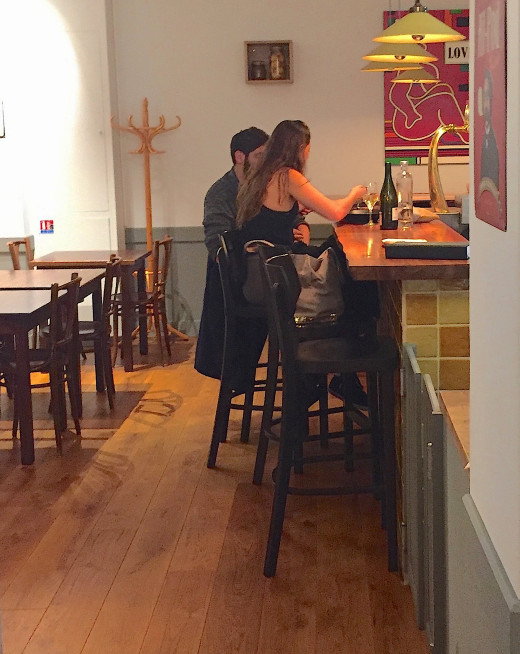
At a time when Paris is still a little raw and on edge, it was reassuring and mood-lifting to be in a busy, happy dining room that’s clearly a new neighbourhood favorite. It’s easy to see why, too, since everything about this place is so flawlessly thought through and professional, including the cooking, but on the other hand, it’s relaxed enough so that a young couple could come through the door around 10pm, ask if they were still serving, and be cheerfully seated at the service bar, where one of the dramatic taps dispenses Gallia, a legendary local brew that was made in Paris from 1890 to 1969, and then revived again in 2009.
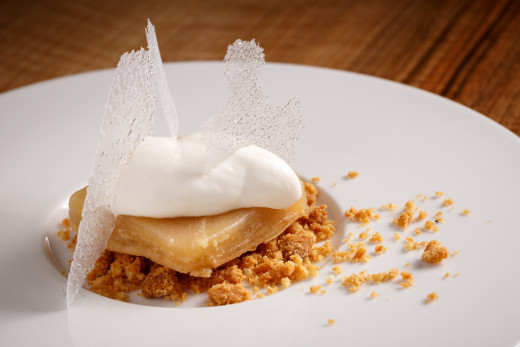
Since portions here are generous, we split a compression de pomme, a sort of deconstructed apple tart, for dessert, and finished up our pleasant bottle of Fleurie, before coffee. When the waiter brought the coffee, we chatted a little bit about the restaurant, and he mentioned he’d previously worked at chef André Chiang’s brilliant Restaurant André in Singapore for two years. That’s when I recognized him, since he’d served me when I ate there last January. And I guess this little coincidence says a lot about what Belleville’s becoming these days, too. One way or another, there have never been so many good restaurants in this neighborhood, and this mensa is definitely one of them.
Mensae, 23 rue Mélingue, 19th Arrondissement, Tel. (33) 01-53-19-80-98. Metro: Pyrénées. Open Tuesday to Saturday for lunch and dinner. Closed Sunday and Monday. Lunch menu: 20 Euros, Dinner menu 36 Euros, average a la carte 35 Euros. www.mensae-restaurant.com

